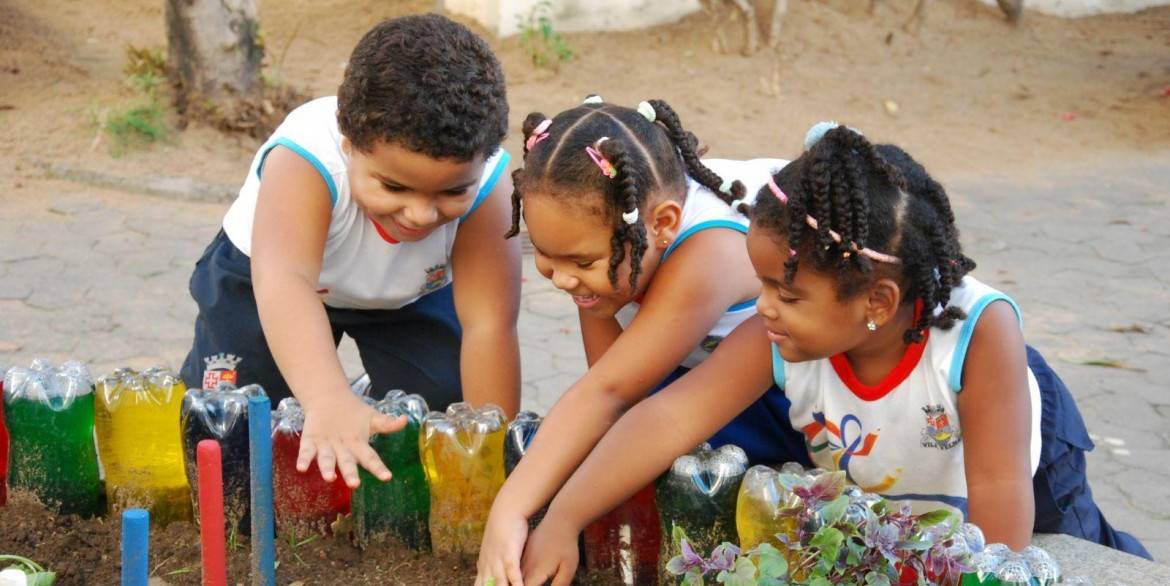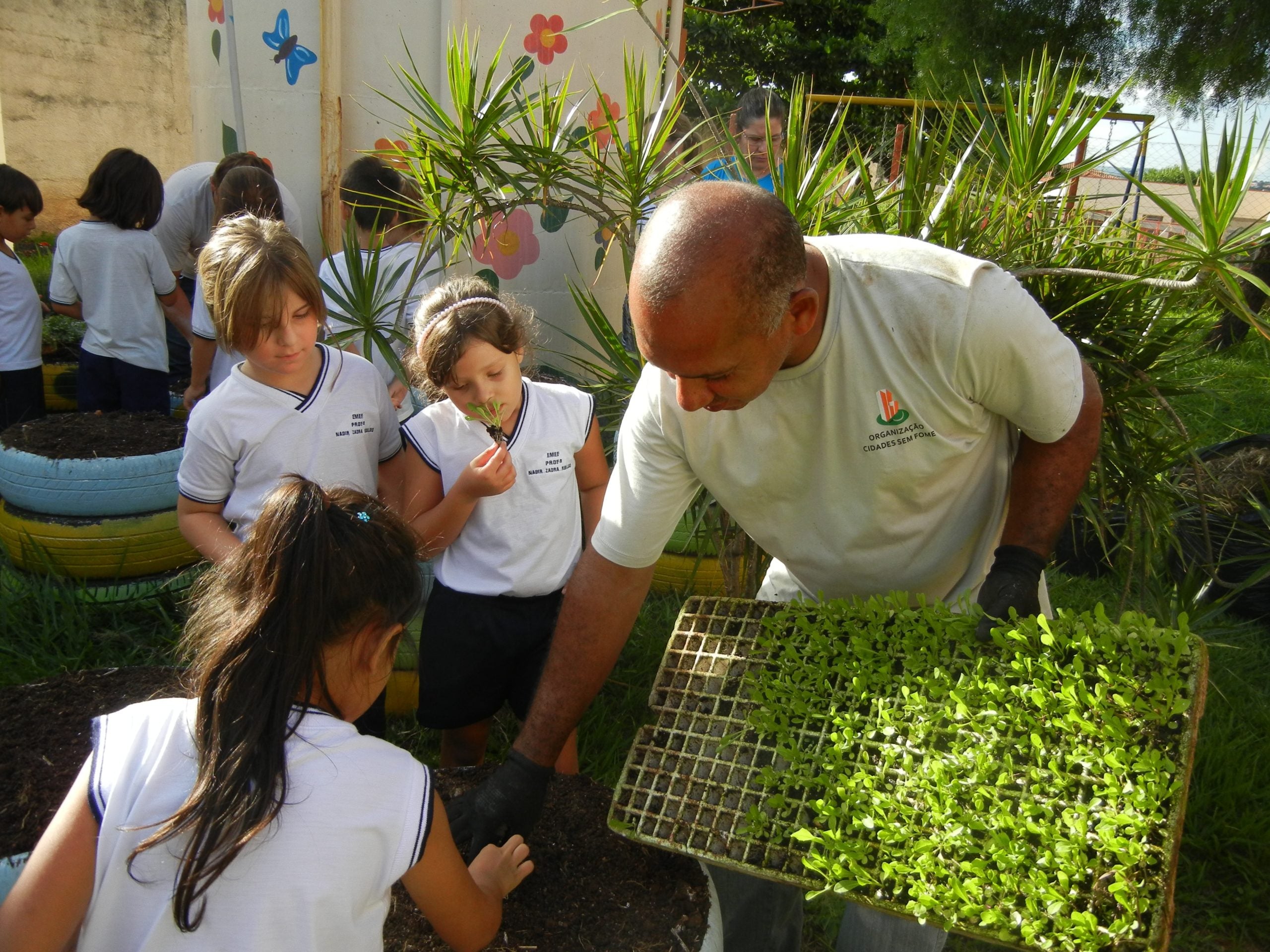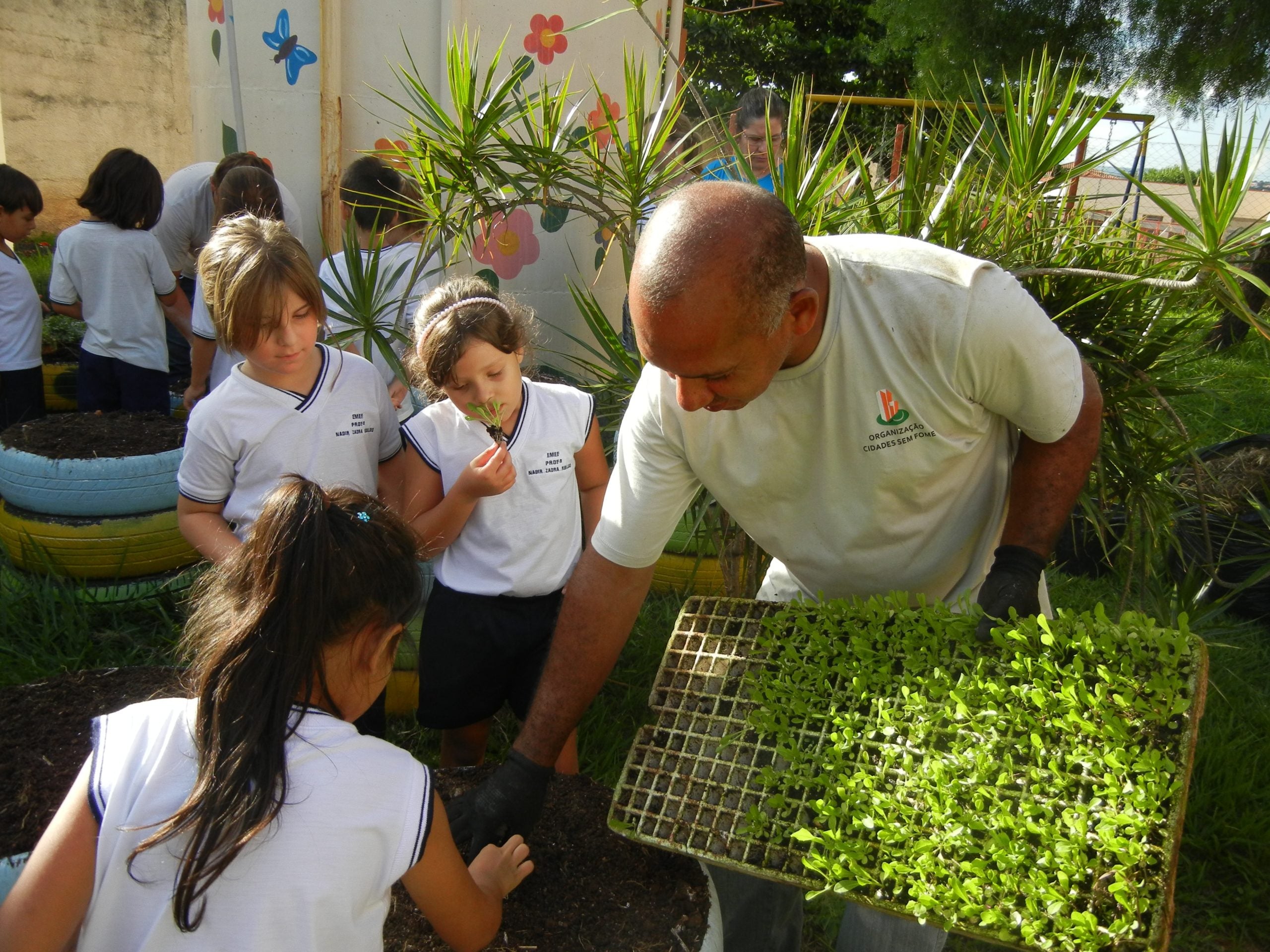Day 9
2 weeks of vegetables from the school garden for a child in Brazil
 Edible classrooms satisfy hunger and thirst for knowledge
Edible classrooms satisfy hunger and thirst for knowledge


School gardens for needy children in the Brazilian megacity of São Paulo

need
School gardens in the eastern zone of São Paulo for students who have little access to healthy food.
activity
School gardens are created by local NGOs, which also provide practical and organizational support for maintenance and school gardening lessons.
Measurable performance
After about 50 days: The first harvest is ready! 2,900 children have access to fruit and vegetables with every daily school meal.
Result
After one year: The garden becomes self-sustaining and ensures the children long-term access to sufficient and healthy food.
Systemically relevant impact
After about 3 years: Malnutrition and undernutrition decrease. Environmental and nutritional education are firmly anchored in the everyday lives of the children and their families.
background


The good deed
AboutBrazil
Brasilia
Capital city
212 559 409
Population
6,796.8
Gross domestic product
per capita per year
Rank 84 of 189
Human Development Index
(Human Development Index)




